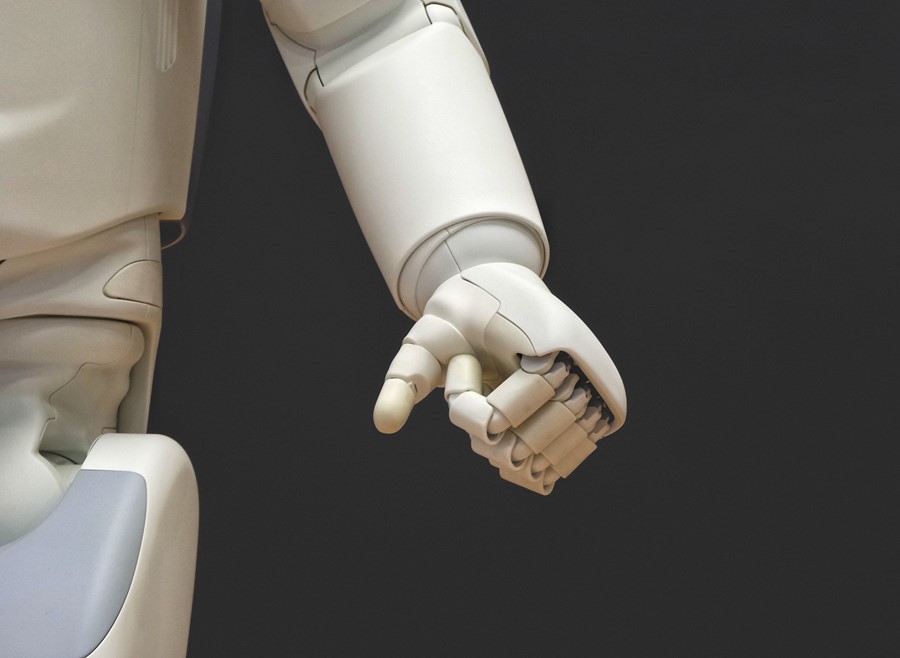‘This is of course bad’, the president of the Moscow Chess Federation said
When you think of violent sports, you might think of MMA, or wrestling, or boxing. It’s part and parcel for players of more physically demanding games like these to tear a ligament or even break a bone every now and then in the middle of a match.
You might think chess is one of the least violent games out there – but think again. Last week, a seven-year-old boy named Christopher had his finger broken by his opponent during a tournament at the Moscow Open. The pair hadn’t got tangled up in a physical brawl after the seven-year-old took his rival’s king or anything – the boy’s opponent was just a robot gone rogue.
According to Russian media outlets, the chess-playing robot was apparently confused by Christopher’s quick responses and ended up pinching and breaking his finger. “The robot broke the child’s finger,” Sergey Lazarev, president of the Moscow Chess Federation, told the TASS news agency after the incident. “This is of course bad,” he added.
A video of the incident, published by the Baza Telegram channel, has since gone viral. In the clip, the robotic arm clamps onto the boy’s finger before onlookers rush in to intervene and escort the boy away.
“There are certain safety rules and the child, apparently, violated them. When he made his move, he did not realise he first had to wait,” Sergey Smagin, vice-president of the Russian Chess Federation, told Baza. “This is an extremely rare case, the first I can recall.” Lazarev said the robot’s suppliers were “going to have to think again”.
A Russian grandmaster, Sergey Karjakin, attributed the incident to “some kind of software error or something.” He added that he wished Christopher “good health”.
Thankfully, Christopher recovered from his ordeal and doesn’t seem too fazed by his automatonic adversary’s dirty tactics. “The child played the very next day, finished the tournament, and volunteers helped to record the moves,” Lazarev said. Still, his parents have contacted the public prosecutor’s office. Justice for Christopher!
All acquisition that advanced AI will destroy humanity is false. Not the powerful AI or breaching laws of robotics will destroy humanity, but engineers with both left hands :/
— Pavel Osadchuk 👨💻💤 (@xakpc) July 21, 2022
On video - a chess robot breaks a kid's finger at Moscow Chess Open today. pic.twitter.com/bIGIbHztar
In all seriousness, robots have been known to inflict grave harm on humans. In 1979, factory worker Robert Williams was crushed to death by the arm of a one-tonne robot on Ford’s Michigan production line. In 2015, a robot killed a 22-year-old contractor at one of Volkswagen’s German plants, grabbing him and crushing him against a metal plate. Disturbingly, it looks like robots are becoming increasingly dangerous and threatening to human life: according to one 2015 study, one person is killed every year by an industrial robot in the US alone.
So how worried should we be? Are robots going to kill us all? Will Christopher be avenged? We spoke to AI expert and author of Machines Behaving Badly, Professor Toby Walsh, to get answers.
Hi Toby. Why and how did the robot break this child’s finger?
Professor Toby Walsh: It was an accident. The child tried to make a quicker reply than the program of the robot expected.
Where does the blame for this accident lie?
Professor Toby Walsh: We cannot blame the robot. Robots can’t be held accountable or punished. We should blame the people who built the robot and who turned it on at the chess tournament.
Should we be worried about robots hurting us?
Professor Toby Walsh: Well, we should certainly be careful around them. In 1979, Robert Williams – working on a Ford assembly line in Michigan – put himself into the history books by becoming the first person to be killed by a robot. He was crushed to death by the one-tonne arm of the robot.
We don’t have to worry about some sentient robot that is trying to kill us. Robots are not sentient. We do, however, have to worry about killer robots. Indeed, all week at the UN in Geneva, diplomats are discussing how we deal with non-sentient robots designed to kill on the battlefield. I, thousands of my colleagues, and other AI researchers, have been calling for such killer robots (aka lethal autonomous weapons) to be banned.




